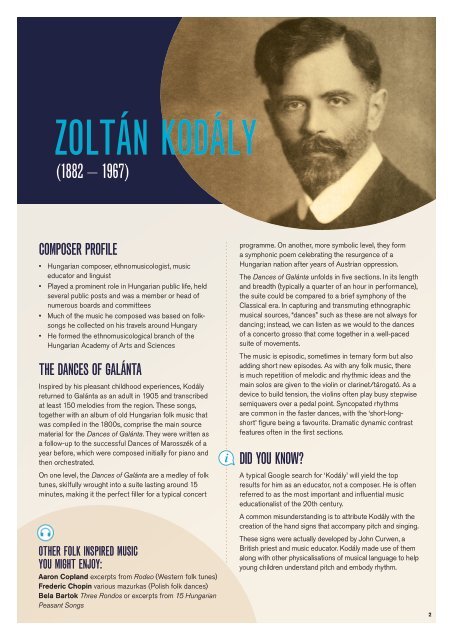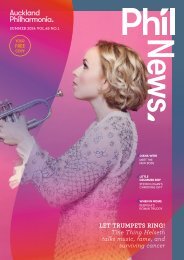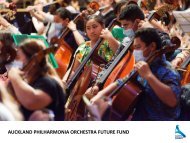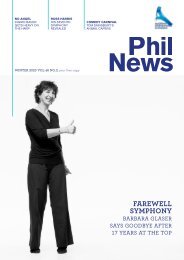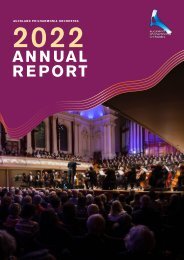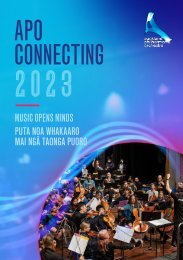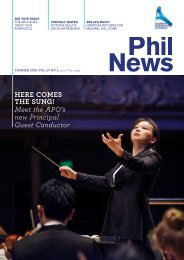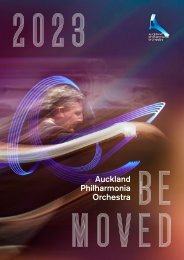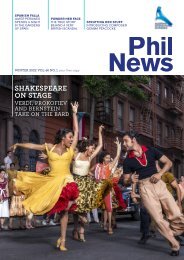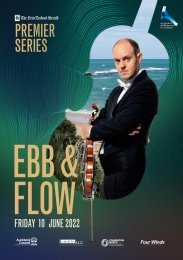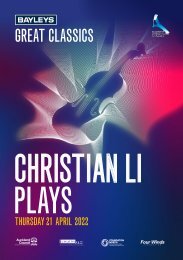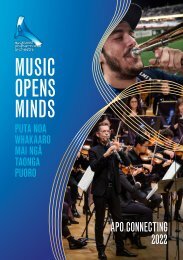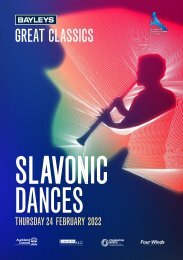Create successful ePaper yourself
Turn your PDF publications into a flip-book with our unique Google optimized e-Paper software.
ZOLTÁN KODÁLY<br />
(1882 – 1967)<br />
COMPOSER PROFILE<br />
• Hungarian composer, ethnomusicologist, music<br />
educator and linguist<br />
• Played a prominent role in Hungarian public life, held<br />
several public posts and was a member or head of<br />
numerous boards and committees<br />
• Much of the music he composed was based on folksongs<br />
he collected on his travels around Hungary<br />
• He formed the ethnomusicological branch of the<br />
Hungarian Academy of Arts and Sciences<br />
THE DANCES OF GALÁNTA<br />
Inspired by his pleasant childhood experiences, Kodály<br />
returned to Galánta as an adult in 1905 and transcribed<br />
at least 150 melodies from the region. These songs,<br />
together with an album of old Hungarian folk music that<br />
was compiled in the 1800s, comprise the main source<br />
material for the Dances of Galánta. They were written as<br />
a follow-up to the successful Dances of Marosszék of a<br />
year before, which were composed initially for piano and<br />
then orchestrated.<br />
On one level, the Dances of Galánta are a medley of folk<br />
tunes, skilfully wrought into a suite lasting around 15<br />
minutes, making it the perfect filler for a typical concert<br />
programme. On another, more symbolic level, they form<br />
a symphonic poem celebrating the resurgence of a<br />
Hungarian nation after years of Austrian oppression.<br />
The Dances of Galánta unfolds in five sections. In its length<br />
and breadth (typically a quarter of an hour in performance),<br />
the suite could be compared to a brief symphony of the<br />
Classical era. In capturing and transmuting ethnographic<br />
musical sources, “dances” such as these are not always for<br />
dancing; instead, we can listen as we would to the dances<br />
of a concerto grosso that come together in a well-paced<br />
suite of movements.<br />
The music is episodic, sometimes in ternary form but also<br />
adding short new episodes. As with any folk music, there<br />
is much repetition of melodic and rhythmic ideas and the<br />
main solos are given to the violin or clarinet/tárogató. As a<br />
device to build tension, the violins often play busy stepwise<br />
semiquavers over a pedal point. Syncopated rhythms<br />
are common in the faster dances, with the ‘short-longshort’<br />
figure being a favourite. Dramatic dynamic contrast<br />
features often in the first sections.<br />
DID YOU KNOW?<br />
A typical Google search for ‘Kodály’ will yield the top<br />
results for him as an educator, not a composer. He is often<br />
referred to as the most important and influential music<br />
educationalist of the 20th century.<br />
OTHER FOLK INSPIRED MUSIC<br />
YOU MIGHT ENJOY:<br />
Aaron Copland excerpts from Rodeo (Western folk tunes)<br />
Frederic Chopin various mazurkas (Polish folk dances)<br />
Bela Bartok Three Rondos or excerpts from 15 Hungarian<br />
Peasant Songs<br />
A common misunderstanding is to attribute Kodály with the<br />
creation of the hand signs that accompany pitch and singing.<br />
These signs were actually developed by John Curwen, a<br />
British priest and music educator. Kodály made use of them<br />
along with other physicalisations of musical language to help<br />
young children understand pitch and embody rhythm.<br />
2


